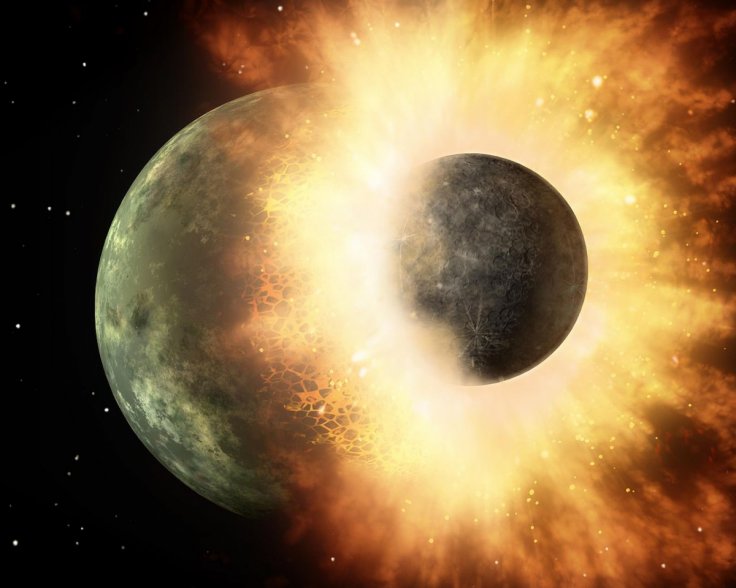March 3, 2018
A massive collision, doughnut-shaped clouds, and rock vapour all seemingly came together to form the Moon.

An artist's concept of collision between the Earth and Theia that formed the Moon. NASA
March 3, 2018
A massive collision, doughnut-shaped clouds, and rock vapour all seemingly came together to form the Moon.

An artist's concept of collision between the Earth and Theia that formed the Moon. NASA
A new theory proposed by researchers from Harvard on the Moon's origins introduces a new concept that makes the Moon older than the Earth. It also explains the Moon's chemical composition as well as how remnants of Theia, the Mars-sized body that crashed into young Earth are still found on the Moon.
There are several theories as to how and when the Moon was formed, from it being placed there by an intelligent being, to a large chunk of it being blown out after a collision with another planet which formed a ring of debris around the Earth which then fused into the satellite.
The new theory suggests that a massive, hot, molten, swirling, doughnut-shaped cloud called "Synestia" was formed as a result of the Earth striking against the hypothetical Theia, only this time the impact was caused by the two rocks' angular momentum.
The impact, say the researchers, formed the cloud of magma about 4.5 billion years ago in the early years of the Solar System. The cloud will remain only for about 100 to 200 years after which it will cool rapidly from rock vapor into large balls of molten magma.
"A synestia is an astronomical body that exceeds the rotation limit of a planet," said Stewart Lock, one of the authors of the study to Gizmodo. "Synestias are created by the high energy and high angular momentum of a giant impact."
While no one has ever seen or even observed this process, within scientific circles, the process of planetary formation is well accepted as it is possible. Now, the Moon is also said to have formed inside the synestia. When the rock vapor began to cool, silicate rock, still in its vapor form, started to rain on another clump of rock, which then eventually emerged as the Moon.
"The Moon forms inside the vaporized Earth at temperatures of four to six thousand degrees Fahrenheit and pressures of tens of atmospheres," explained Lock. This shows why the Moon has a number of similarities with the Earth in terms of geological composition. It also explains why there are no volatile elements such as zinc, sodium, and potassium up there. All the extreme heat and pressure could have destroyed them.
The theory of rapid cooling of rocks from extremely high temperatures was also the explanation that scientists on a different study about the purity of the Moon's crust cited.
The theory is still hypothetical and cannot be taken as fact. More data and research around young stars is ongoing and researchers will continue to refine and fine tune the doughnut cloud approach to planetary and natural satellite formation.
Courtesy/source: IBTimes
















































































































